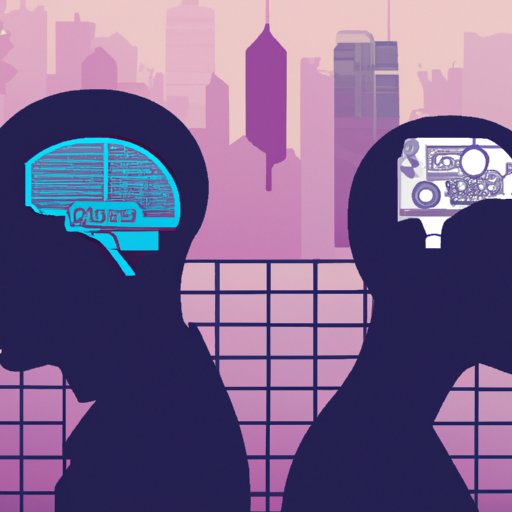Introduction
Artificial intelligence (AI) is a term used to describe the development of computer systems that can learn from data, identify patterns, and draw conclusions. It has been hailed as a revolutionary technology with the potential to transform industries, improve productivity, and create new opportunities for economic growth. However, AI also carries significant risks that must be addressed if we are to realize its full potential. In this article, we will explore the potential dangers posed by AI-driven automation, including job displacement, economic inequality, erosion of civil liberties, international security implications, bias and discrimination in decision making, and malicious cyber attacks.
Job Displacement and Economic Inequality
One of the most significant risks posed by AI-driven automation is job displacement. As AI and robotics become increasingly capable of performing tasks that have traditionally been done by humans, it is likely that many jobs will be eliminated or replaced by machines. This could lead to significant disruption in the labor market, with millions of people potentially losing their jobs and being unable to find suitable work. According to a recent study by the McKinsey Global Institute, up to 800 million workers around the world may be displaced by automation by 2030.
The displacement of workers due to automation could also lead to widening economic inequality. Those who are able to take advantage of the opportunities presented by AI-driven automation—such as entrepreneurs and skilled workers—may benefit greatly, while those without the necessary skills or resources may find themselves disadvantaged. This could further exacerbate existing inequalities in society, creating an even starker divide between the “haves” and “have-nots.”
Erosion of Civil Liberties
Another potential risk posed by AI-driven automation is the erosion of civil liberties. AI-enabled surveillance systems have become increasingly common in recent years, with governments and corporations using them to monitor citizens and consumers. These systems can collect vast amounts of data about individuals, which can then be used to target them with ads, manipulate public opinion, or even detect criminal activity. This has raised serious concerns about privacy and freedom of expression, as well as the potential for abuse of power.
For example, in China, the government has implemented a massive AI-powered surveillance system known as the “Social Credit System”. The system uses facial recognition technology and other data collection techniques to track citizens’ activities and score them based on their behavior. Those with low scores may be denied access to certain services or privileges.
International Security Implications of AI-Driven Weapons Systems
The development of AI-driven weapons systems poses serious risks to international security. Autonomous weapons systems, such as drones and robotic tanks, can make decisions without human intervention and carry out military operations with little or no oversight. This raises the specter of rapid escalation in conflicts, as well as the possibility of unintended consequences caused by AI-driven weapons systems.
In 2017, the United Nations held a meeting to discuss the potential implications of autonomous weapons systems. After the meeting, the UN Secretary General stated that “[a]utonomous weapons systems raise profound questions about meaning of human control over the use of force.” He also warned that the development of such weapons could lead to an arms race and “a destabilizing and dangerous world”.
Bias and Discrimination in AI-Powered Decision Making
AI-powered decision making processes, such as those used to evaluate job applications or creditworthiness, can also pose risks. These systems rely heavily on data, which can be biased or incomplete. If these biases are not identified and corrected, they could lead to unfair outcomes, such as individuals being denied jobs or loans due to their gender, race, or other characteristics. This could result in discrimination against certain groups in society.
In 2018, researchers at MIT released a study that examined the results of an AI-powered hiring tool. The tool was found to be significantly biased against women, suggesting that it was more likely to reject female applicants than male applicants. This is just one example of the potential for bias and discrimination in AI-powered decision making.
Malicious Cyber Attacks Enabled by AI-Driven Technologies
Finally, AI-driven technologies can also enable malicious cyber attacks. AI-powered malware and hacking tools can be used to launch sophisticated attacks that are difficult to detect and counter. Such attacks could have serious consequences, such as stealing sensitive information or disrupting critical infrastructure.
In 2019, researchers at the University of California, Berkeley revealed a new type of AI-powered malware called “DeepLocker”. DeepLocker was designed to evade traditional security measures and target specific individuals or organizations. The researchers warned that such malware could be used to launch targeted attacks on critical infrastructure or corporate networks.
Conclusion
AI-driven automation carries significant potential risks, including job displacement, economic inequality, erosion of civil liberties, international security implications, bias and discrimination in decision making, and malicious cyber attacks. To mitigate these risks, it is important that we develop responsible approaches to AI development and deployment. This should include measures to ensure that AI-powered systems are transparent and accountable, and that they do not lead to unjust outcomes or infringe upon civil liberties. Only then can we fully realize the potential benefits of AI-driven automation.
(Note: Is this article not meeting your expectations? Do you have knowledge or insights to share? Unlock new opportunities and expand your reach by joining our authors team. Click Registration to join us and share your expertise with our readers.)
